 |
Earhart Project Research Bulletin
April 20, 2010
A New Clue in the Earhart Mystery
| The Nessie Hypothesis |
With little more than a month before the departure of TIGHAR’s largest, most technologically sophisticated Earhart Project expedition to date, new historical evidence has come to light which appears to add significant support to TIGHAR’s theory about the lost flight’s fate. A photograph taken three months after the Earhart Electra disappeared shows what may be part of the airplane.
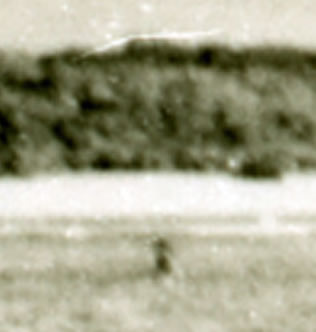 |
TIGHAR member and forum contributor Ted Campbell recently recently wrote in response to the Research Bulletin Hiding in Plain Sight “The photo almost looks like a main gear standing upright.” TIGHAR forum contributor Tom Swearengen expanded on Ted’s comment. “This certainly looks like a landing gear strut, with the tire imbedded in the reef. Makes sense to me that the surf would have ripped the airframe from the strut, and then the strut from the reef, especially if a storm had moved over the island.” Others may see a different shape but, while we’re waiting for a high-resolution scan of the original photographic print, it’s worth examining the hypothesis that “Nessie” (the unidentified object sticking up out of the water in the photo) is the landing gear of a Lockheed Electra. |
||
| First we’ll need to understand how the main landing gear of the Electra is constructed. | |||
| The axle, wheel and tire are straddled by a stainless steel fork and gear leg that rides in an oleo shock strut. The strut is carried in a triangle-shaped steel assembly that swings like a trapeze from “ears” attached to the aircraft’s massive aluminum main beam when the wheels are retracted rearward. | 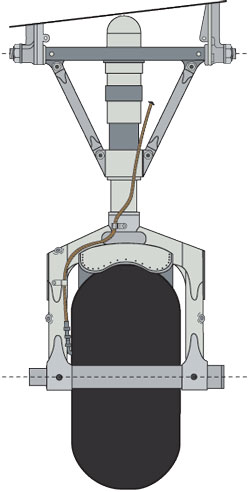 |
||
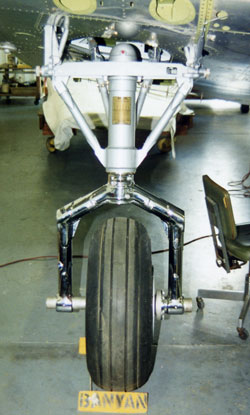 |
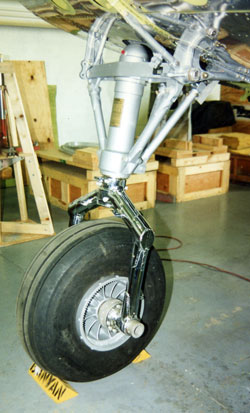 |
||
| Landing gear on Lockheed Electra c/n 1130 under rebuild in 1994. | Original drawing by Bill Harney. | ||
The Goodyear Airwheel tires on Earhart’s aircraft were much wider than the tires seen on c/n1130 in the above photos. |
Main gear attach point. Lockheed photo. |
||
Main gear attach point on NR16020. |
|
||
We have theorized that the aircraft was landed on the reef flat at Nikumaroro on the smooth surface near the reef edge where the spur and groove zone begins.
What would then become of the rest of the airplane is hard to say, but if it was washing about in the surf in the spur and groove zone “nothing good” would be a safe bet. Light structures such as the tail surfaces or even the empennage itself might well fail before the gear attach points failed. It’s an elegant hypothesis but it only works if the photo was taken at a time when the water level on the reef was low but not dry. Bevington was at Nikumaroro for three days – October 13, 14, and 15, 1937. We don’t know for sure which day the photo was taken but the sun appears to be high in the southwest (roughly 225°). TIGHAR tide specialist LCDR Bob Brandenburg USN (ret) has calculated that the sun was at 225° at Nikumaroro those days at 12:38, 12:39, and 12:40 respectively. According to Bevington’s diary, he was engaged in a hiking circumnavigation of the island from 09:00 until 15:30 on the 13th, so the photo could not have been taken that day. On the 14th he was supervising well-digging on shore until noon. In the afternoon he explored the lagoon in a canoe, so it does not appear that the photo was taken on the 14th. On the morning of the 15th he helped erect a flagstaff and then inspected the wells that had been dug the previous day. He was back in camp at 11:30, had lunch, and then returned by launch to the ship for the voyage to the next island. The timing seems about right for him to be in the launch or aboard the ship around 12:40. He doesn’t mention the sea conditions that day but he does say that the next day was “a perfect day at sea, calm and favourable winds.” It would therefore seem safe to conclude that the photo was taken on October 15 between, say, 12:30 and 13:00. During that time, the water level on the reef in the area where we think the plane came to a stop after landing was 0.12 meter (4.72 inches) to 0.19 meter (7.5 inches). If “Nessie” is the landing gear strut of a Lockheed Electra with the axel jammed in a reef groove, the water level on the reef at the time the photo was taken is consistent with the amount of structure that seems to be visible in the Bevington Photo. This confluence of coincidences is supportive of the hypothesis but by no means proves that Nessie is the landing gear of a Lockheed Electra. Perhaps the hi-res scan will give us a better look. |
|||
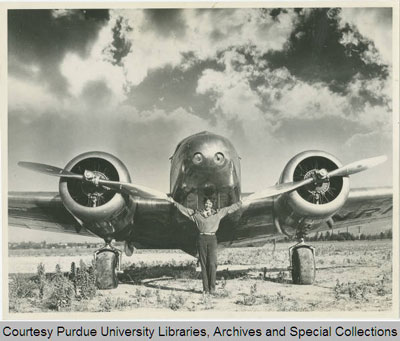
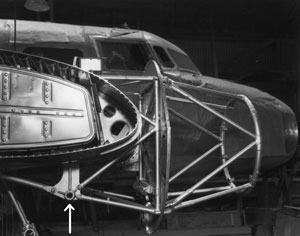
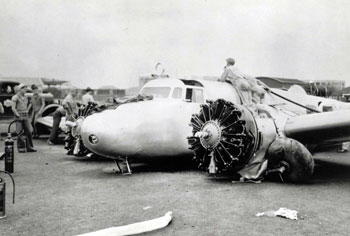 The points at which the steel gear
assembly attach to the main beam are, of course, the weakest parts
of the structure. During
the groundloop at Luke Field on March 20, 1937, the landing gear
failed due to the extreme side-load. Photos of the wreck show that
the gear legs tore loose from the main beam and were displaced to
the side. The U.S. Army accident report confirms that the oleo struts
did not fail, suggesting that the failure occurred at the attach
points, as one would expect.
The points at which the steel gear
assembly attach to the main beam are, of course, the weakest parts
of the structure. During
the groundloop at Luke Field on March 20, 1937, the landing gear
failed due to the extreme side-load. Photos of the wreck show that
the gear legs tore loose from the main beam and were displaced to
the side. The U.S. Army accident report confirms that the oleo struts
did not fail, suggesting that the failure occurred at the attach
points, as one would expect.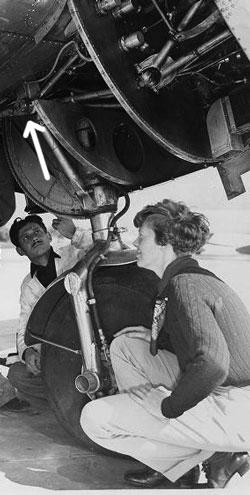
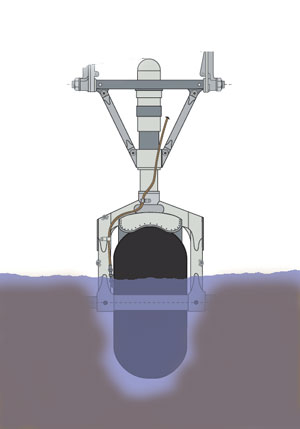
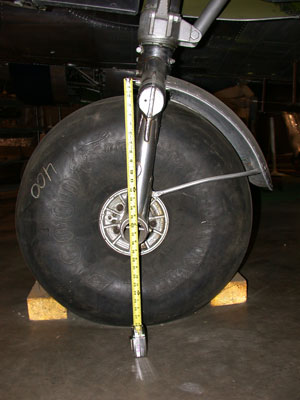
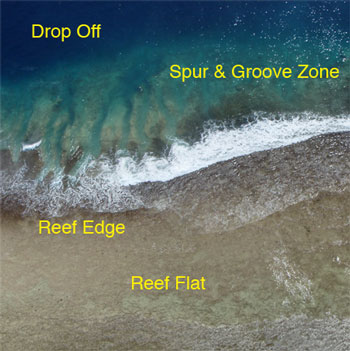 Surf
at high tide might shift the aircraft around but as long as it could “weathervane” freely
no structural damage would result. If however, after several days,
one of its wheels dropped into a groove, the axle could easily become
jammed in the coral. With the one wheel held immobile and the
airplane no longer able to weathervane, the force of the surf on
the fuselage would put tremendous torque on the gear attach points.
If the attach points failed as they appear to have done in the Luke
Field groundloop, the aircraft would tear free leaving the one gear
assembly sticking up as we see in the Bevington Photo.
Surf
at high tide might shift the aircraft around but as long as it could “weathervane” freely
no structural damage would result. If however, after several days,
one of its wheels dropped into a groove, the axle could easily become
jammed in the coral. With the one wheel held immobile and the
airplane no longer able to weathervane, the force of the surf on
the fuselage would put tremendous torque on the gear attach points.
If the attach points failed as they appear to have done in the Luke
Field groundloop, the aircraft would tear free leaving the one gear
assembly sticking up as we see in the Bevington Photo.